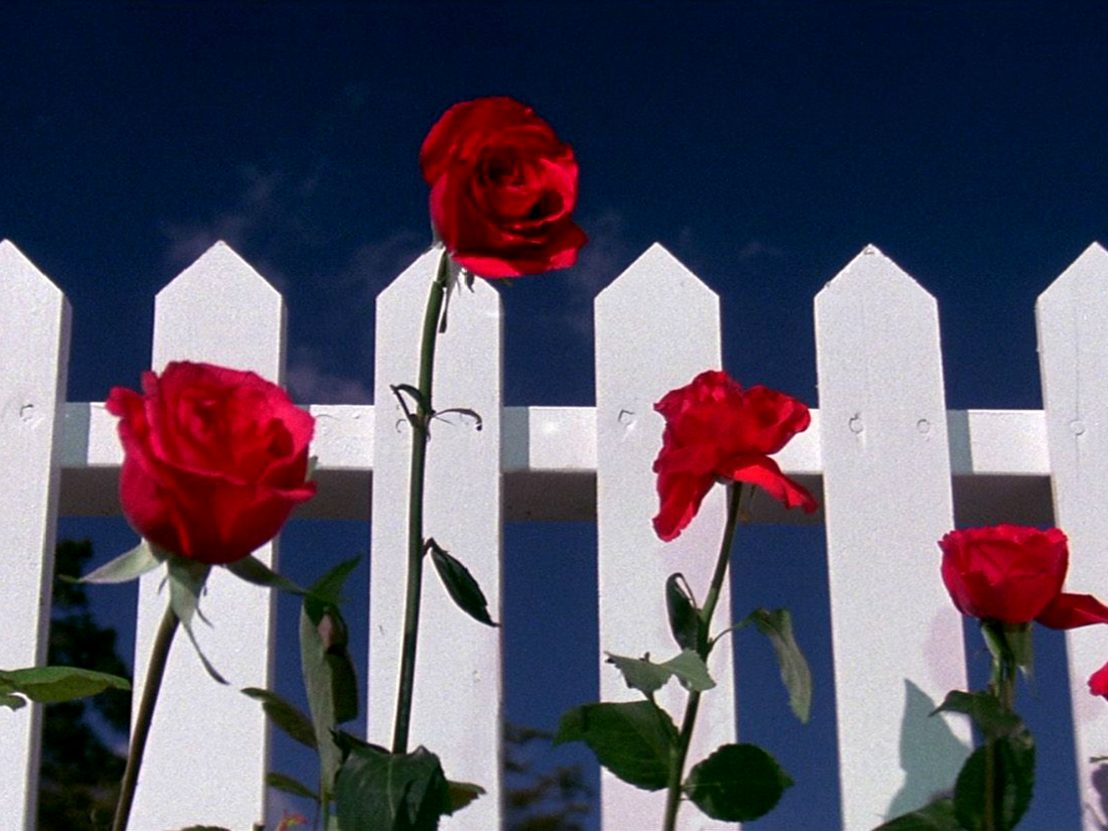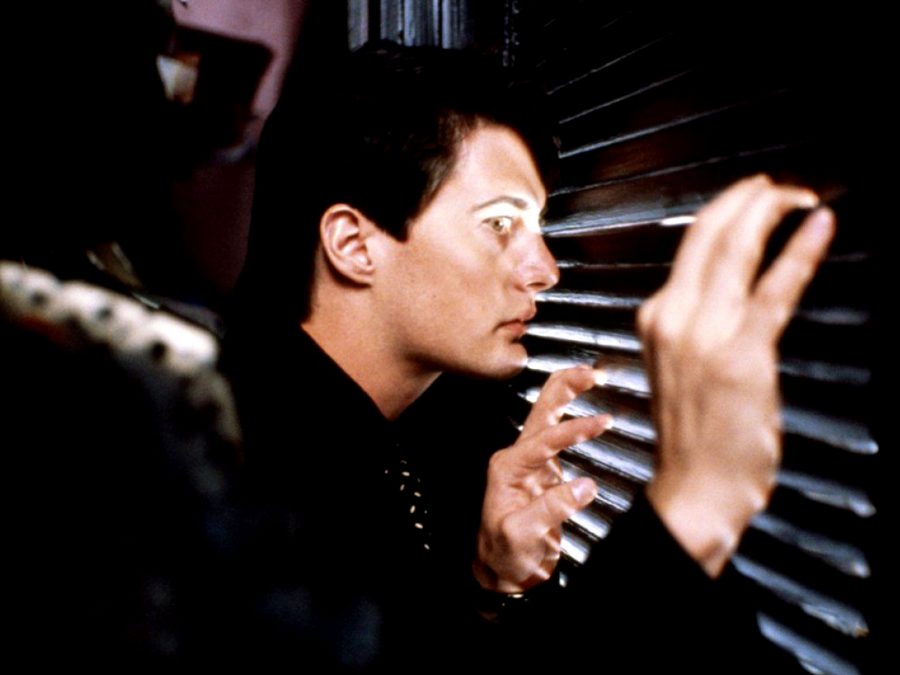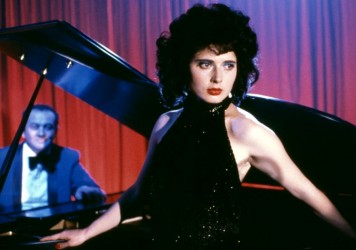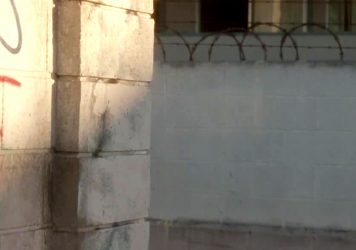
Much like the alleged secret society that runs Hollywood from the murky shadows, David Lynch’s 1986 masterpiece Blue Velvet alludes to a sinister underbelly pulling the strings of a scenic suburban smokescreen. Certainly, this brooding film noir, set to join the Criterion Collection in May, pulls back the curtain of the American dream to expose the evil existing below.
But as Lynch himself once said, “I learned that just beneath the surface there’s another world, and still different worlds as you dig deeper.” With his statement in mind, Blue Velvet can be read as a microcosm of allegorical conceptions used to dispatch themes on elite occultism. The clues are there; it’s about knowing what to look for.
Perhaps the key to unlocking these hidden messages can be found within the opening scene, one that foreshadows the ruthless dissection of Americana to follow. A nostalgic montage of blue skies, red roses and white picket fences is backed by the crooning of Bobby Vinton, only to be crushed when an old man suffers from a seizure and falls to the floor.
While he writhes in pain, a dog’s bark turns into a demonic howl as the camera travels through the grass to reveal a writhing mass of beetles and soil. Since its release well over 30 years ago, critics and academics have accepted the imagery as a sombre meditation against the idea of perfection; just beneath the surface resides destruction and decay.
And yet, straight after these scenes we’re introduced to our scopophilic protagonist Jeffrey Beaumont (played by Lynch’s acting bulwark Kyle MacLachlan), the son of the hospitalised gardener whose discovery of a human ear draws him into the dark, twisted world of tortured lounge singer Dorothy Vallens (Isabella Rossellini) and Oedipal sociopath Frank Booth (Dennis Hopper).
The severed appendage, and subsequent unravelling of the mystery surrounding it, suggests the sinister hermetic stirrings were in plain site this whole time, exposing the duality synonymous with the iconic occult phrase “as above, so below”. These words accompany French occultist Eliphas Levi’s image of the symbolic deity Baphomet pointing upwards with the right hand and downwards with the left, drawn from the ancient works of Hermes Trismegistus.
In investigating the opening scenes within this context, the plot reveals itself as more than a commentary on good versus evil; the infiltration of esoteric imagery seems to suggest a secretive force governing the modern world out of public view. Note the seemingly innocent fireman holding his left hand downwards, his right pointed towards the sky as he waves, the red truck and black-and-white Dalmatian beside him indicating the colour palette of satanic ritualism.
The surrealist nature of Lynch’s craft muddies the water in terms of analytical speculation, and yet certain clues appear clear-cut, particularly the first shot of colour: a bed of red roses against a white picket fence. Although, to the casual eye, the virtuous image signifies a hyperbolised vision of Americana, look a little closer and you’ll seen an undeniable parallel to the Rose Cross of the cultural and spiritual movement Rosicrucianism, a combination of occultism and other religious practices.
The stage is thus set for Jeffrey to become much more than a student caught in the middle of a whodunit. As he later admits to Sandy (Laura Dern) over a Lynchian diner lunch, “I’m seeing something that was always hidden.

Certainly, from the moment he dares to enter Dorothy’s apartment, Jeffrey sees more of this hidden world than he bargained for. We’re made to know her den of the damned can be found on floor seven, a number symbolising the perfect connection between the macrocosm and microcosm, taking us back to the acroamatic perception of duality. Here the character unexpectedly witnesses the brutalisation of Dorothy by the violent tyrant Frank, who carries out a ruthless pretence of an incestuous act which echoes arcane ritualistic practices.
For centuries, the macabre ceremonies of the satanic sect have remained a mystery for mainstream society, and yet Lynch reveals the full show through Jeffrey’s watering eyes. From the drink of bourbon to the purpose of the blue velvet robe, every action is an element of some rehearsed communion, the singer sacrificing herself to the perverse sexual desire of her captor in a bid to save her son.
The shamanic nature of ritualistic tradition comes under further scrutiny by Frank’s obsession with Roy Orbison’s ‘In Dreams’, particularly the lyric “candy-coloured clown they call the sandman”. The ballad signals the start of a ceremony; just as Dorothy knew to rush for a glass of bourbon, Frank’s cronies scurry to hit the play button whenever he demands the candy-coloured clown.
Unfolding within the backdrop of the dreamlike portrayal of suburbia, these black magick practices arouse fear, confusion and awe. Just like Jeffrey, we’re left peeking through the slats of a cupboard at something we’re not quite sure we’ve just seen.
While he tries to make sense of it all, it’s in dreams, as the song prophesied, when the subconscious takes centre stage. Just as was done with Bob in Twin Peaks and Marietta in Wild at Heart, Lynch introduces fire as an ominous symbol. Set against a demonic rumble, the candle’s flame is snuffed out when Jeffrey succumbs to Dorothy’s request to hit her – darkness manifests as he takes an active role in the ritual, no longer an innocent bystander.
In occultist theory, fire is the key spiritual element; it is at once the purifying light of heaven and the destructive fuel from hell. In this sense, fire illustrates the rampant duplexity evident throughout the film. It is the heroic deeds of our Heineken-loving hero and the insidious procedures of the sociopathic Frank. It is the blue hues of Dorothy’s robe and the stark red of the club in which she sings, the black attire of Jeffrey against Sandy’s pastel pinks and whites.
This push-and-pull continues right up until the closing scene when Sandy’s delusional vision comes true. Frank is defeated, Dorothy is reunited with her son and the picture postcard equilibrium is restored. Yet there’s a sense of fragility about the scene, that this dreamlike portrait could come crashing down at any moment.
In Blue Velvet, Lynch has constructed a hermetic terrain where masked secrets are allied to the mysteries of the modern world. Although ambiguity is a prerequisite of any Lynchian work, if we approach the film with this perspective, the complex arrangement of systemic ideals at least asks us to acknowledge an unknown reality existing beyond our normal senses. Unlike Jeffrey and Sandy, we’re awake to the bug-infested world below.
Criterion’s Blue Velvet DVD and Blu-ray will be available for purchase on 28 May.
Published 12 May 2019

Exploring the director’s use and manipulation of music in his 30-year-old masterpiece.

By Jack Godwin
From a severed Barbie head to Twin Peaks spin-offs, the director has made some truly bonkers ads over the years.

By Greg Evans
If you recognise this scene, you’ll already know what’s coming...